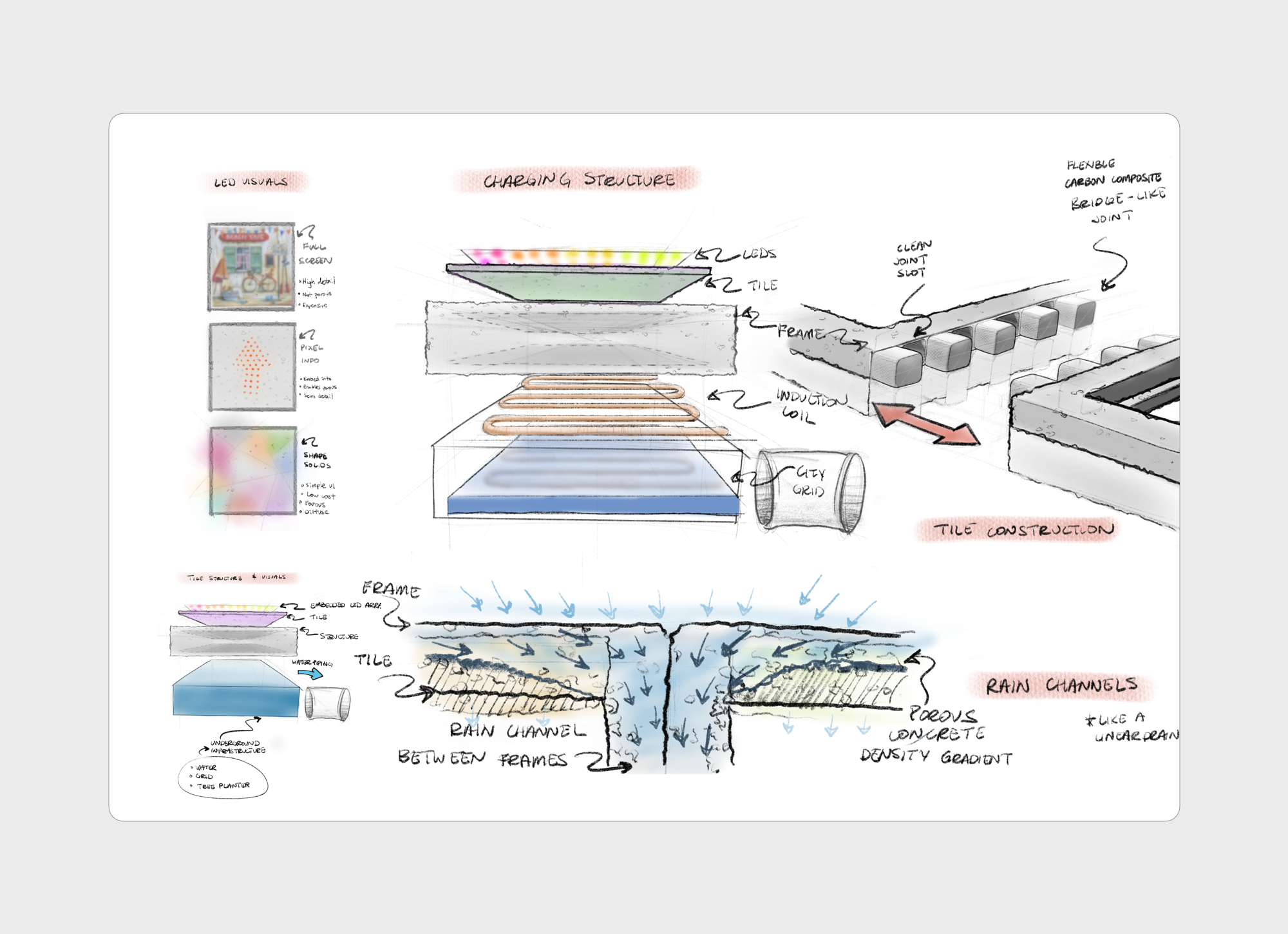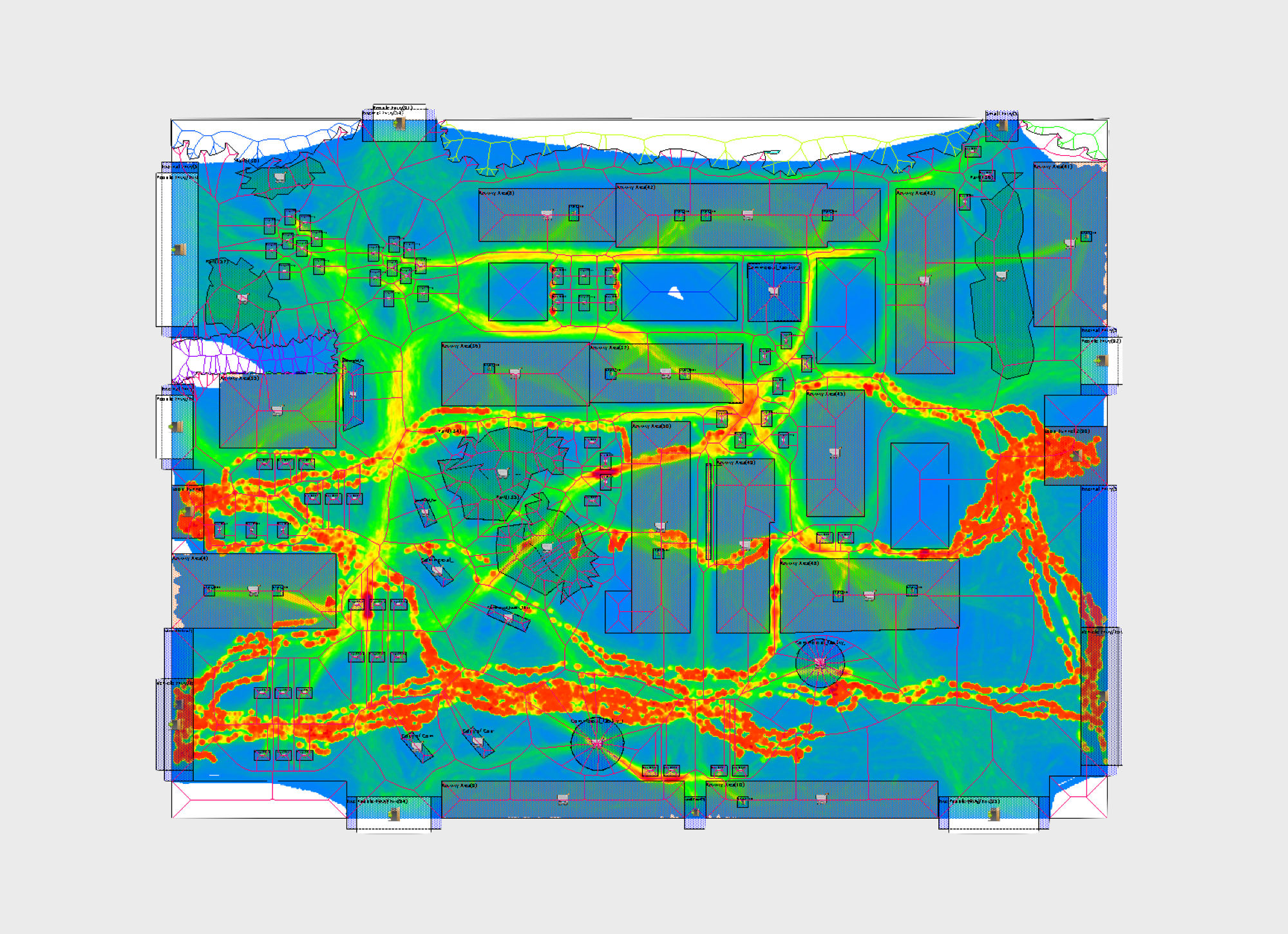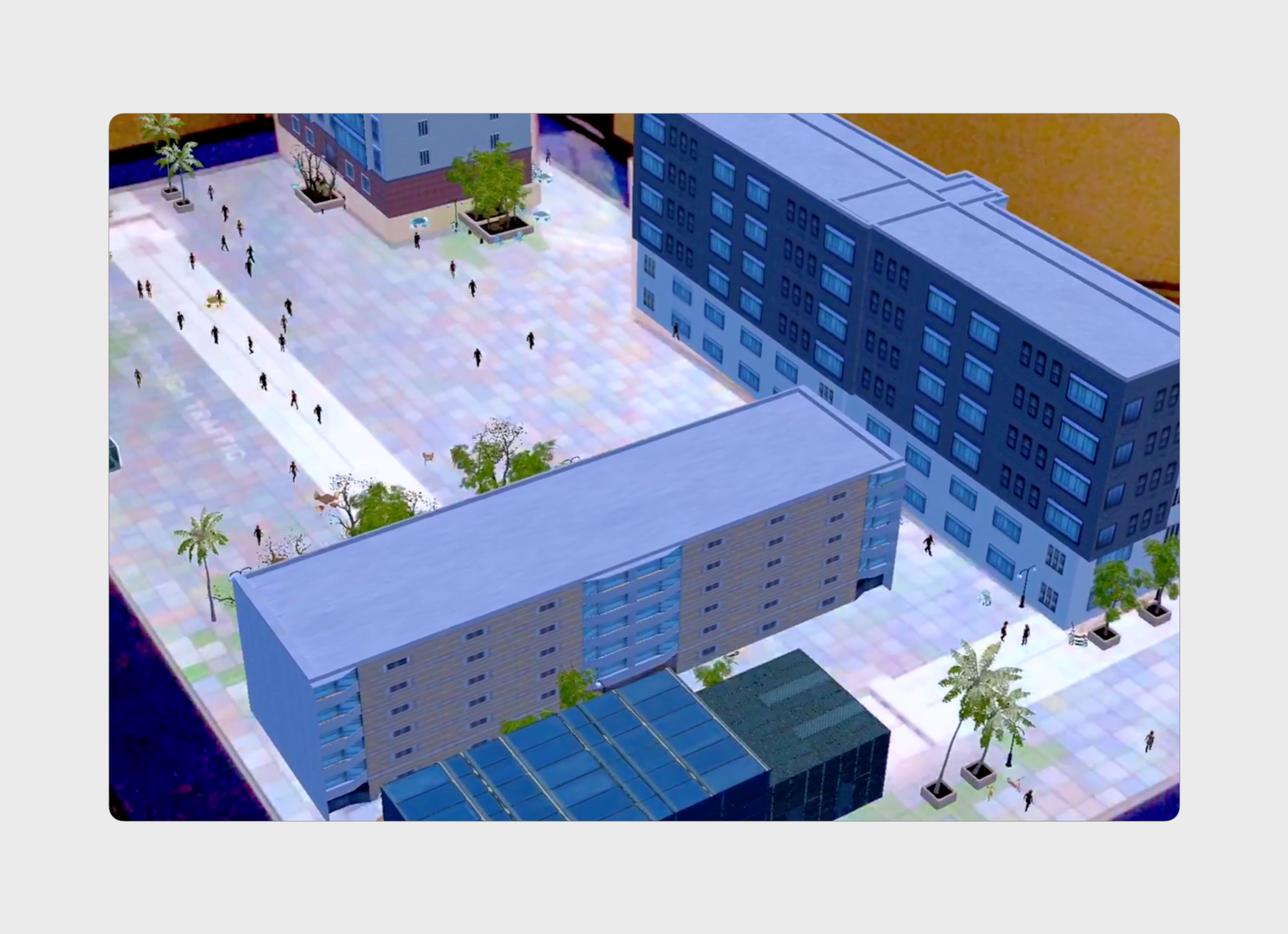Research, Interviews, and Development
Research into the future of autonomous mobility and smart cities led to the subject of providing motility for all in particular to aging and disabled populations. Meetings and interviews were conducted with experts from LA Metro, DTLA, city of West Hollywood, and Access Paratransit as well as individuals with mobility disabilities.
An understanding of the current climate of urban development directed the needs and focus of Living City. Universal access, business opportunities, and efficiency became key driving forces of the project.
Concept Synthesis
Initial concepts ranged from mobility solutions to public transit and embedded sensor or hardware networks. Hans Monderman’s Shared Spaces inspired the choice to enable mobility by removing many of today’s street borders and dangers such as curbs, ramps, segregated lanes, and high-speed road networks.
Dynamic Blocks were incepted to combat the lack of efficiency in today’s road organization. Flexible, optimized streets enabled a living organism of a city that fit the needs of communities any time and day.
Model and Simulate
Living City was modeled in detail through the use of VR and CAD. Building off of downtown Los Angeles’s Westlake and MacArthur neighborhoods, a simulation was conducted for peak mornings, mixed-use times, and weekends for the urban area using Pedestrian Dynamics. Max density never crossed 50% of today’s traffic.
Unity was key in illustrating the flow efficiency that was simulated. The transient visualization utilized the desire lines for pedestrians and transit systems from Pedestrian Dynamics to create an optimal city organization.
Virtual and Mixed Reality
Atop the flow model, a detailed representation of future Los Angeles was built within Unity. Dynamic components including custom micro-transits, furniture, and underground road networks were included in the visualizations. Pedestrian motion including those in wheelchairs were added along desire lines.
Mixed reality brought the experience into the real world. An augmented reality application alongside a transient physical model made from card stock, acrylic, and LED panel simulated the dynamism of Living City.




